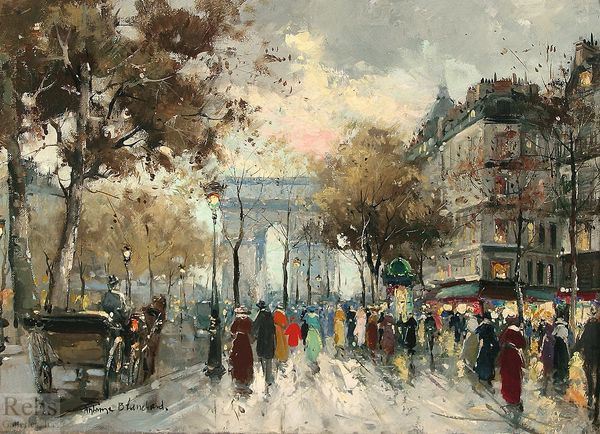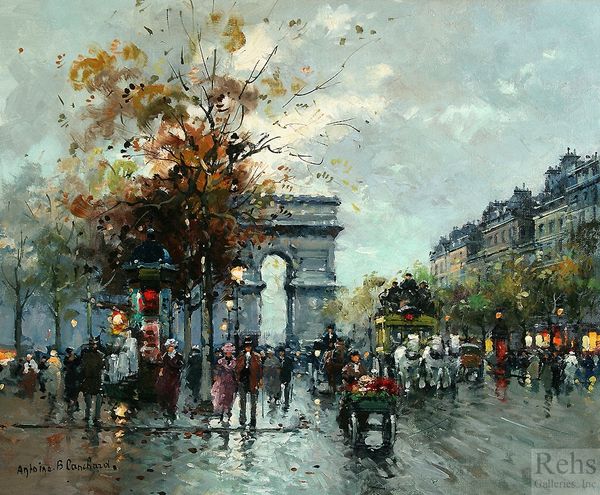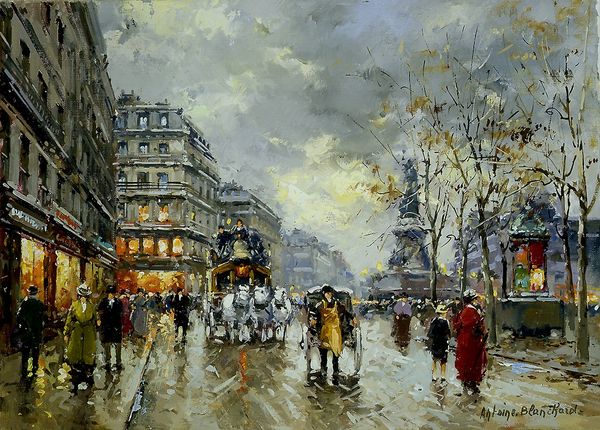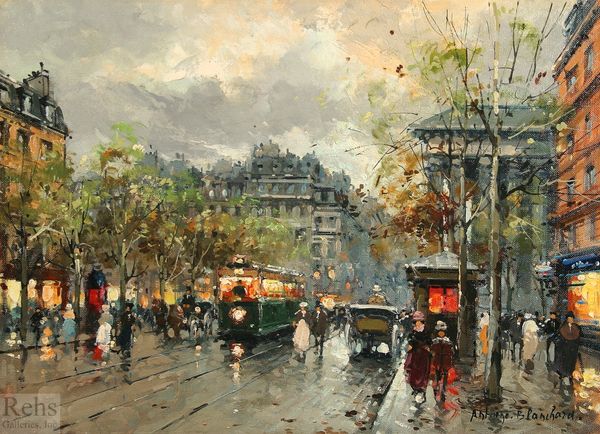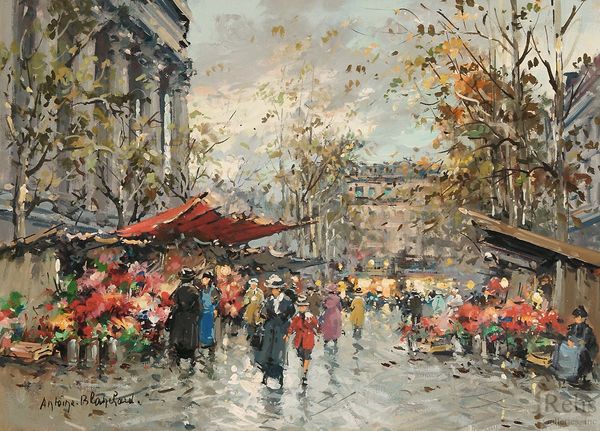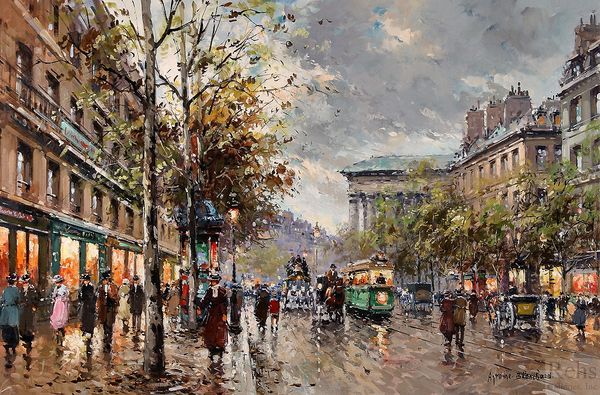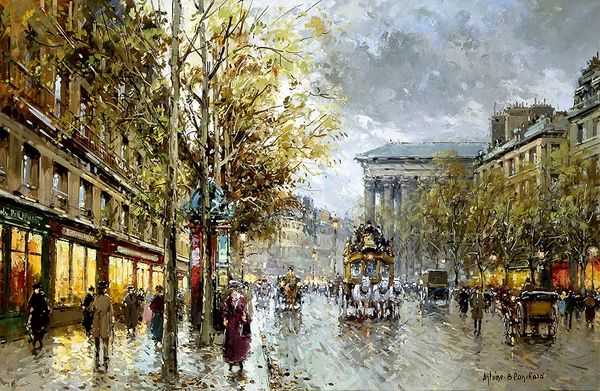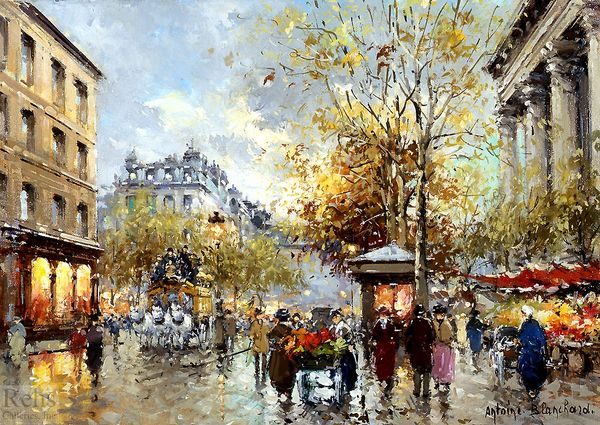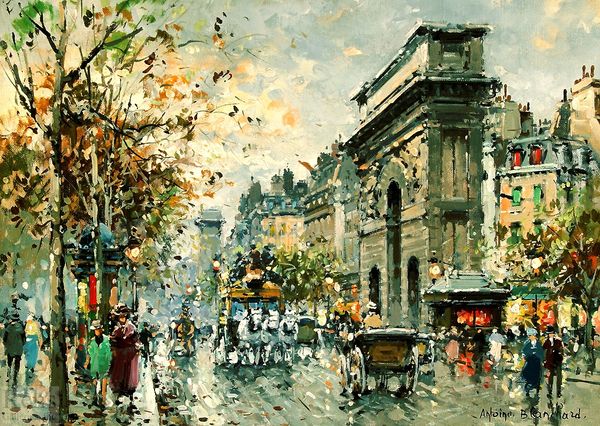
painting, plein-air, oil-paint
#
tree
#
urban landscape
#
painting
#
impressionism
#
impressionist painting style
#
plein-air
#
oil-paint
#
vehicle
#
landscape
#
house
#
impressionist landscape
#
figuration
#
oil painting
#
road
#
square
#
cityscape
#
street
#
building
Copyright: Antoine Blanchard,Fair Use
Antoine Blanchard painted La Rue Lafayette et le Square Montholon sometime in the middle of the twentieth century. The cultural context of France is crucial to interpreting this piece. Blanchard’s painting invites us to consider the social structures of Parisian life. The wide boulevards and bustling streets suggest a city of commerce and leisure. The architecture reflects a city rebuilding itself after great wars, with the Square Montholon, once a symbol of revolution, now an area for middle-class leisure. The figures in the painting, dressed in their finest clothes, suggest a society that values appearances and social status. In interpreting this painting, the art historian might look at city planning documents, fashion magazines, and other sources to understand the social and economic context in which it was made. By exploring the cultural codes embedded in this image, we gain a deeper understanding of the public role of art, the politics of imagery, and the social conditions that shape artistic production.
Comments
No comments
Be the first to comment and join the conversation on the ultimate creative platform.

